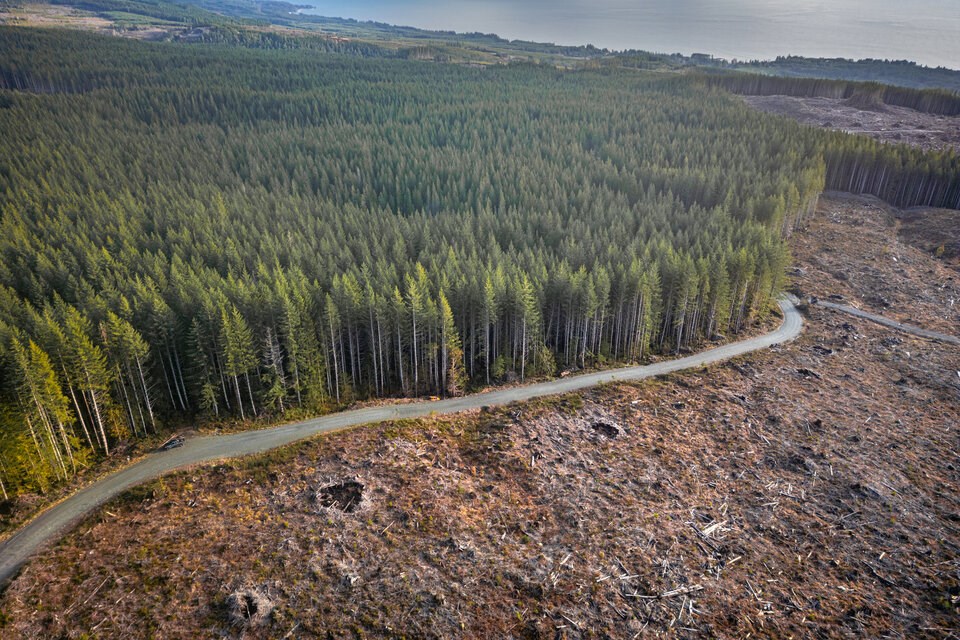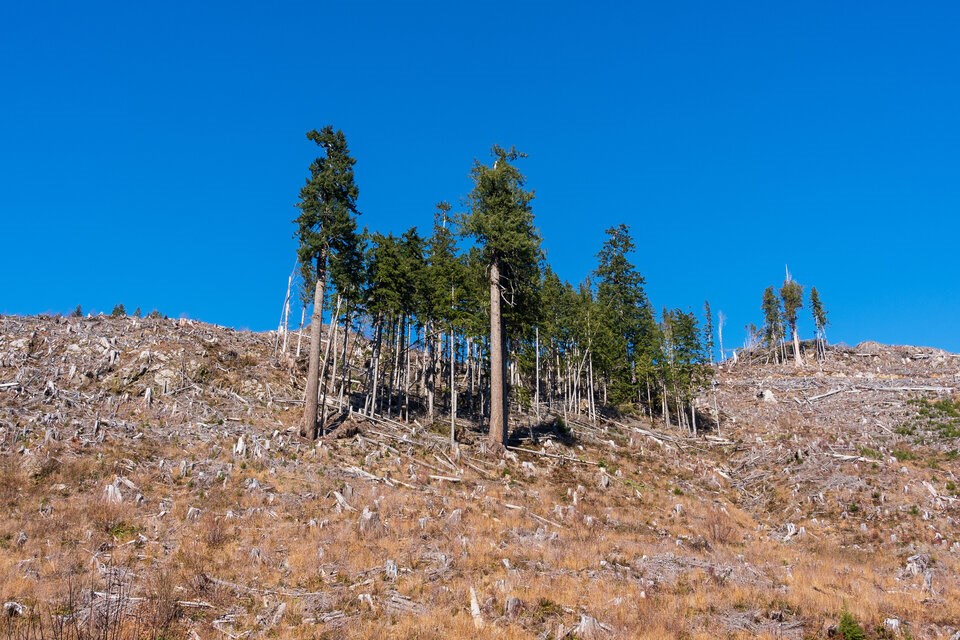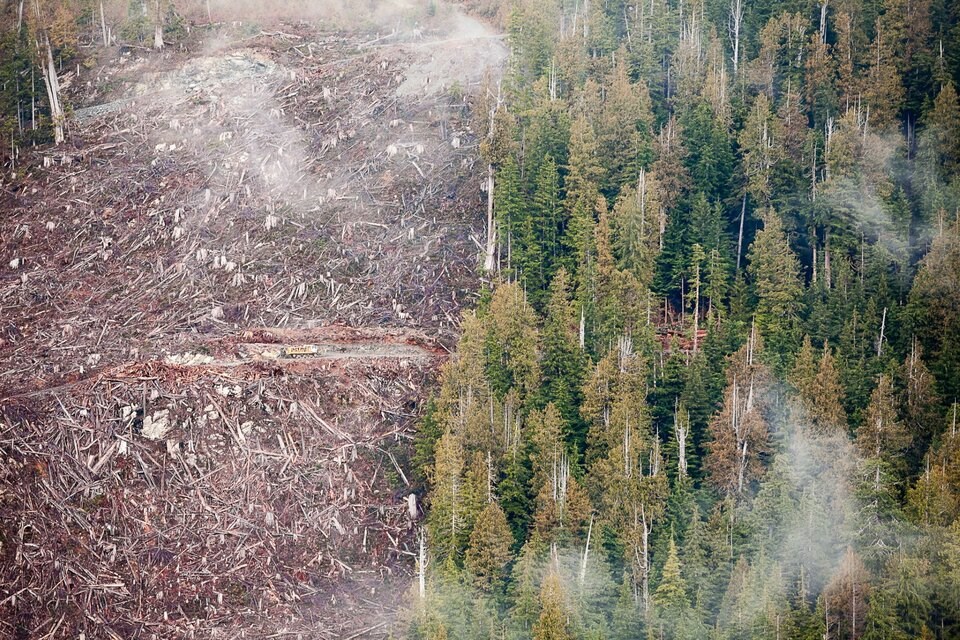B.C.’s Ministry of Forests has approved a new way to calculate the amount of carbon in forests — what it says is a direct response to an auditor general investigation that found the province had failed to transparently do so in the past.
In March 2025, the Office of the Auditor General of British Columbia released the results of its investigation into the Ministry of Forest’s forest carbon projections.
Those projections are used to understand how the ministry’s management decisions might impact how much carbon remains stored in the forest and how much is released into the atmosphere.
The analysis uses modelling to estimate how activities like tree planting and harvesting trees could affect the overall balance of carbon in the forest.
But according to the auditor general, the ministry's guidelines for calculating carbon projections — which in turn help it determine the allowable annual cut — contained "gaps in methodology."
On Tuesday, the Ministry of Forests said it had moved to address that failure.
Province says new carbon budget model closes gaps
The new guidance was approved by Shane Berg, the Assistant Deputy Minister and Chief Forester, on July 21, 2025. It uses a carbon budget model to consider various carbon indicators — including carbon stocks, density, and the net ecosystem carbon balance — in a way that provides a complete picture of carbon dynamics, according to the document.
Other inputs for the model include forest inventory data, growth and yield curves, and a variety of disturbances — from harvesting to wildfires and mountain pine beetle infestations.
The model will be run annually for a minimum of 100 years to provide a long-term perspective on carbon sequestration and emissions within the forest landscape.
In a statement, the ministry said understanding change in the carbon balance of forests is important information for calculating annual allowable cut because forests sequester and release carbon, reflecting growth, natural disturbances and management activities.
“Using the same defined method for every [timber supply review] will benefit people and organizations involved in forest management because it ensures transparency, consistency and credibility in forest carbon projections,” the statement said.
The auditor general’s investigation had also found the ministry did not use a “defined methodology” when it calculated the carbon impact of investments under the Forest Investment Program.
The roughly $95-million-a-year program is meant to re-forest lands, mitigate climate change and restore ecosystems and wildlife habitat, while improve public accountability, according to the ministry.
But the audit found the ministry used a methodology that “wasn’t specific enough to allow review or replication.”
The ministry said in a statement it is still working to solve that problem, and expects to complete a “defined and approved methodology” this year.
B.C. carbon credit model falling short, says expert
Forests worldwide absorb an estimated 7.6 billion metric tonnes of carbon dioxide every year. But logging, wildfires and city building threaten that carbon sink.
In B.C., greenhouse gasses from logging and forest management are reported but not counted as part of the province’s total output of carbon emissions.
Since 2004, the province’s forestry sector flipped from a net carbon sink, so that by 2018, the industry released more than half the annual emissions currently being counted in the province, according to public data.
A similar pattern has played out Canada, where logging and wildfires have combined to make forests a net source of carbon since 2001, according to the federal government.
Federal audits have repeatedly found Canada has failed to accurately account for logging emissions, with one report from Nature Canada estimating the industry's net emissions at 147 megatonnes in 2022. This figure would make the forestry sector the third-highest emitting industry in the Canadian economy.
Gary Bull, a professor emeritus of forestry at the University of British Columbia, said the B.C. government has struggled to come up with a working forest carbon standard for years.
“There’s good science behind the model they are using, but ecologists can only get you so far in terms of the business world,” Bull said.
From an economist’s point of view, Bull said counting carbon stored in a forest’s trees and soil offers a chance for it to be monetized and sold as carbon credits in one of two kinds of markets.
The first, known as compliance markets, are mandatory, established and regulated by governments or international bodies to meet specific, legally binding emission reduction targets. The "cap-and-trade" systems — such as Canada's industrial carbon price — set a limit on emissions for high-emitting industries, requiring them to hold a certain number of allowances, which they can either earn or purchase.
The voluntary market, on the other hand, is driven by businesses and individuals who choose to offset their emissions for reasons like corporate social responsibility, brand reputation or personal values. It operates outside of legal mandates and is not subject to government regulation. Instead, credits are certified by independent third-party standards.
When it comes to forests, the idea is to incentivize heavy emitting companies to buy carbon credits so forest managers can prioritize conservation alongside the value of timber. The influx of of money ostensibly allows forest managers to protect more watersheds and move away from clear-cut logging to more sustainable harvest systems.
“We can’t get to our emissions targets just with engineering solutions. That’s where the nature-based solutions come in. That’s where B.C. comes in,” said Bull. “You’re trying to create a different conversation … it gives you room to make different solutions financially viable.”

Proponents of carbon credit markets also say the emerging market will incentivize big tech companies to offset their emissions at a time data centres are increasingly consuming large volumes of electricity to power the artificial intelligence sector.
Despite the current U.S. administration’s attempts to undermine climate policy, Bull said many companies around the world remain serious about bringing carbon neutrality to their operations.
“There’s opportunity there,” he said. “Carbon is now part of the narrative and part of the financing.”
The B.C. government’s latest changes to how it measures carbon may make incremental improvements, but Bull said the model the province uses to attract big investors is largely falling short. He pointed to a number of reasons why that might be — from the province's long contract terms to a forestry model dictated by annual allowable cut.
“I think the international marketplace is moving beyond us. We’ve been at it for 20 years or more. It’s suboptimal,” said Bull. “I think they’re caught in an internal discussion instead of reaching out to the rest of the world.”
Forest carbon credit projects under the microscope
Bull says no province in Canada has fully embraced a model of forest carbon credits like many other parts of the world. But even where big projects have gone ahead, controversy has followed.
In 2022, Mosaic Forest Management Corp. said it would defer logging on 44,000 hectares of land on Vancouver Island in a carbon credit project known as the BigCoast Forest Climate Initiative.
The company, which is privately held by three major public pension funds — including the B.C. Investment Management Corporation (BCI) — first started receiving credits for BigCoast in 2023 as one of the largest improved forest management projects in the world.
A subsequent audit from the U.S.-based company Renoster Systems Inc. found the project suffers from a set of fundamental problems that render its credits "highly dubious."
"Most critically, the project’s area appears to us to be gerrymandered," Renoster concluded.

Results from the audit, which were first reported by the Globe and Mail and strongly disputed by Mosaic, found the project’s boundary had been drawn to selectively include aesthetic buffers around roads and waterways, as well as in forests on steep terrain that would never have been logged anyway.
Renoster also found the project suffered from a lack of transparency and accounting problems — including a failure to consider fire risk — that left the auditor's "dubious of the project’s carbon claims."
Mosaic temporarily suspended the program in the fall of 2024 to assess what it described as accounting errors. An audit from the firm Verra — a world-leading provider of carbon offsets used by big corporations ranging from Disney to Shell — found errors had resulted in the excess issuance of 670,000 verified carbon credits.
Verra has also been forced on the defensive in recent years. In 2023, an investigation by The Guardian newspaper found a significant percentage of rainforest carbon offsets provided by the Washington, D.C., firm were “largely worthless.”
Verra contested the findings, stating the reporting was based on research that “massively miscalculate” its certified projects.




